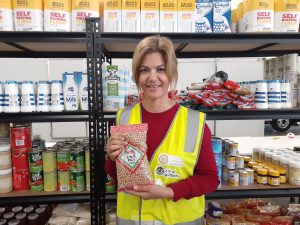Newly arrived communities hit harder by cost of living pressure – study
Emerging refugee and migrant communities in Australia appear to be suffering greater cost of living stress than the broader community, a survey of community leaders has found.
A focus group of 34 community leaders in 21 key cohort migrant and refugee groups report high levels of cost of living stress in their communities.
In more than half of the communities (15) the stress members are facing is higher than in the general community.
The worst hit communities are members of the African, Afghan and Myanmar communities.
Refugee communities generally are being impacted more negatively than migrant communities.
But a counter narrative also emerged from the survey of community members using their resilience and entrepreneurialism to augment their incomes and support their communities.
The survey also suggests cost of living pressure is having a negative impact of family violence.
Migrant and refugee settlement agency AMES Australia has recruited a group of community embedded leaders from key newly arrived migrant and/or refugee communities in Melbourne, Sydney and Adelaide to provide key insights into how issues and policy developments affect their lives.
Eighteen of twenty-one communities surveyed in the study reported that the impact of cost of living rises was worse in their communities than in the broader community.
Migrant communities were less likely to be impacted than refugee communities and the worst affected were African, Afghan and Myanmar communities. Largely skilled migrant communities from China, India, Vietnam, Korea and Malaysia reported the level of stress was no worse than across the broader community.
Rents, mortgages, food and utilities were cited by most communities as the areas that have seen the largest cost rises.
Some of the worst impacted communities reported that the difficulties had brought members closer together in offering support to struggling community members.
Eighteen of the communities reported that despite the cost of living challenges, they were still happy with life in Australia.
Just three communities, those from Congo, Ethiopia and Eritrea, reported that they were only ‘partly’ happy with life in Australia.

Norma
Syrian community leader ‘Norma’ said the most recently arrived members of her community were having the most difficulty.
“Newly arrived people are having the worst time. They struggle to find a house because of the housing shortage and the fact they have no local references or rental history,” she said.
“And even when they find a house, the rent has usually been increased significantly since the last tenant moved out,” Norma said.
But she said that the crisis had seen community members come together to support each other, sharing food and resources and providing emotional support.
“Everyone is aware that some people are having hard time and so we are trying to help those in need,” she said.
South Sudanese community leader ‘Elizabeth’ extended families and groups of friends were coming together to help each other.
“People are reaching out and helping each through things like bulk buying food, sharing vehicles and looking after families that are particularly vulnerable.”
“Across the community there is a lot of support for people who need it and everyone who is able to, is pitching in to help others.”
But she said one negative effect was a rise in family violence.
“This stress on families is sometimes ending badly with more domestic violence.”
AMES Australia CEO Cath Scarth said the survey strongly suggested newly arrived refugee and migrant communities are more vulnerable to cost of living rises than the general community.
“The survey also identifies areas where support for people struggling with the cost of living could make a difference,” Ms Scarth said.
“Firstly, there is a need for more in-language information for communities about how to access the support that is available in the community and also emergency support.
“And maybe we need to ramp up community capacity building so that these communities are better placed to help their own members,” she said.












